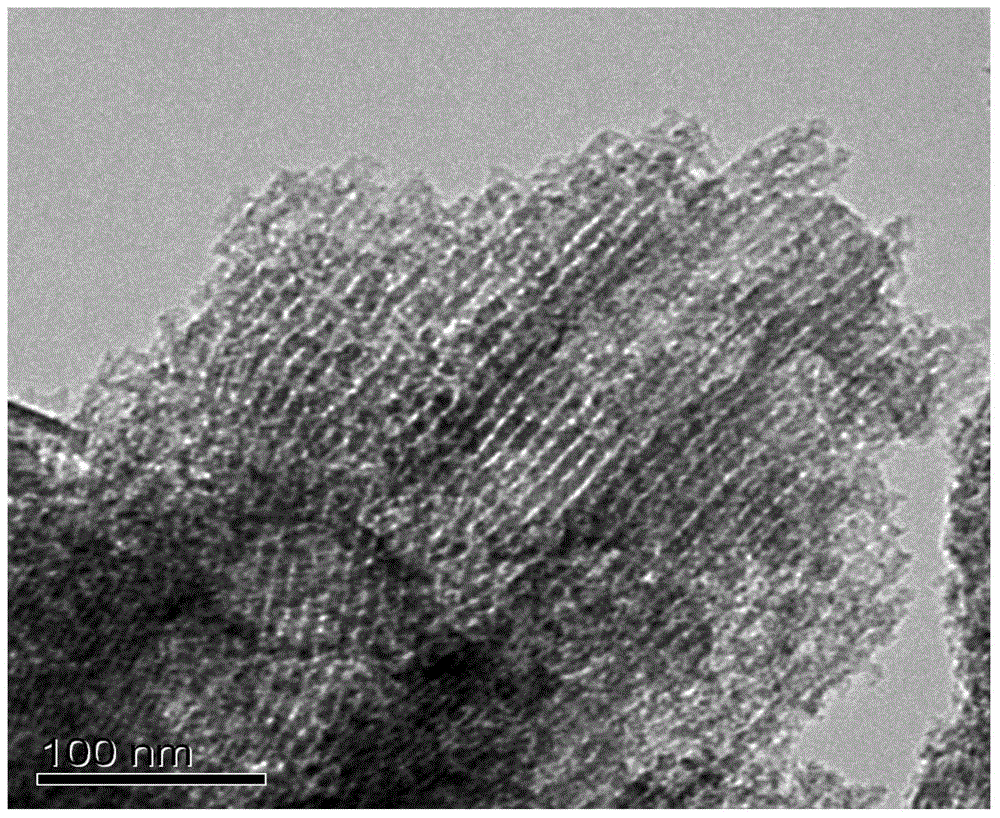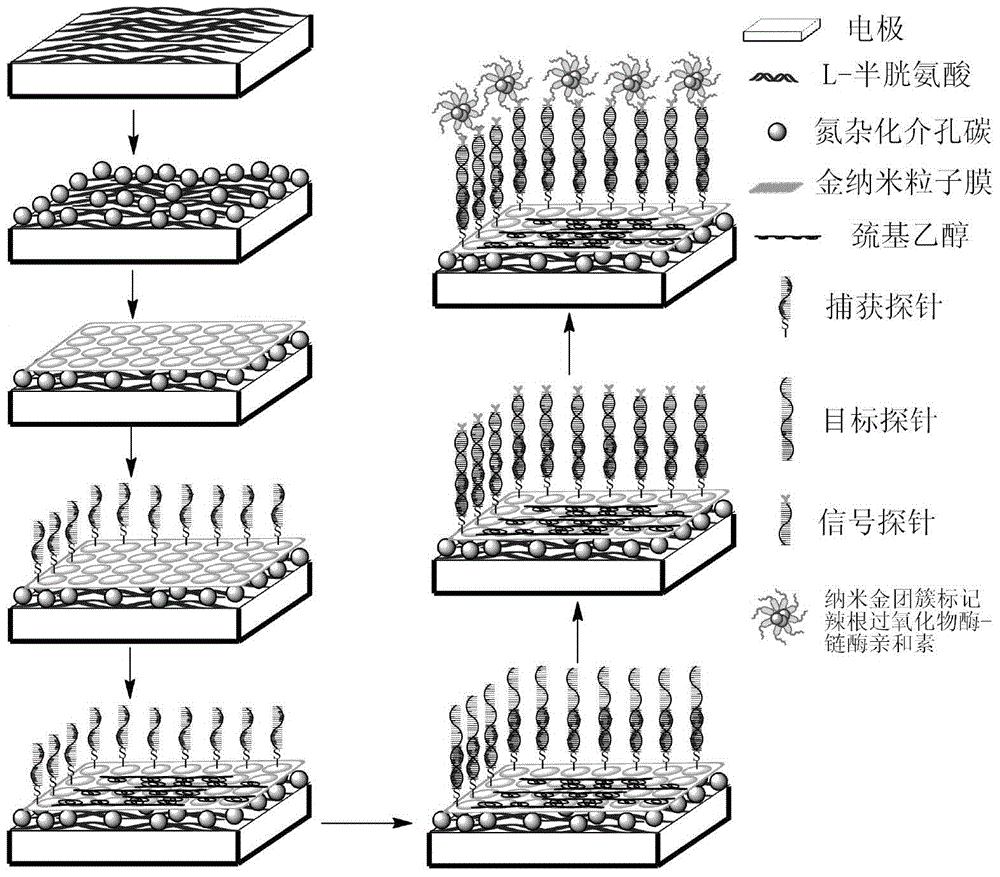Nitrogen-hybridized mesoporous carbon-based biosensor, preparation method and application
A nitrogen-hybridized mesoporous carbon and biosensor technology, applied in the field of biosensors, can solve the problems of high price of gold electrodes, and achieve the effects of low detection cost, strong biological adaptability, and improved transmission capability.
- Summary
- Abstract
- Description
- Claims
- Application Information
AI Technical Summary
Problems solved by technology
Method used
Image
Examples
Embodiment 1
[0033] Fabrication of biosensors based on nitrogen-hybridized mesoporous carbon
[0034]The nitrogen-hybridized mesoporous carbon-based biosensor of the present invention is a three-electrode electrochemical sensor, including a working electrode, a reference electrode and a counter electrode, the reference electrode is a saturated calomel electrode, and the counter electrode is a platinum electrode , the working electrode includes a glassy carbon electrode, and the detection end surface of the glassy carbon electrode is sequentially connected with L-cysteine, nitrogen hybridized mesoporous carbon, gold nanoparticle film and thiol-modified capture probe, the The gold nanoparticle film is also connected with mercaptoethanol that seals the remaining binding sites of the gold nanoparticle film.
[0035] The preparation method of described working electrode is,
[0036] 1. Surface treatment of the glassy carbon electrode: Polish the surface of the glassy carbon electrode, then rin...
Embodiment 2
[0046] Fabrication of biosensors based on nitrogen-hybridized mesoporous carbon
[0047] The nitrogen-hybridized mesoporous carbon-based biosensor of the present invention is a three-electrode electrochemical sensor, including a working electrode, a reference electrode and a counter electrode, the reference electrode is a saturated calomel electrode, and the counter electrode is a platinum electrode , the working electrode includes a glassy carbon electrode, and the detection end surface of the glassy carbon electrode is sequentially connected with L-cysteine, nitrogen hybridized mesoporous carbon, gold nanoparticle film and thiol-modified capture probe, the Also attached to the gold nanoparticle film is mercaptoethanol that blocks the remaining binding sites of the gold nanoparticle film.
[0048] The preparation method of the working electrode is the same as in Example 1, the difference is that in the second step, the concentration of the L-cysteine solution is 1.0×10 -2 ...
Embodiment 3
[0053] The method for measuring the specific coding gene fragment of manganese peroxidase by the biosensor based on aza-hybridized mesoporous carbon, first drops samples containing signal probes and different concentrations of target chains on a nitrogen-hybridized mesoporous carbon-based biosensor. Base pairing is performed on the working electrode surface of the biosensor, and the reaction is not less than 60 minutes at 37°C; then the phosphate buffer solution (pH 7.38) was dropped on the surface of the working electrode of the nitrogen-hybridized mesoporous carbon-based biosensor, and the reaction was not less than 30 minutes at 37°C; finally, hydroquinone and hydrogen peroxide were used as substrates, and the three-electrode system was connected measured in an electrolytic cell. Utilize the measured current change value and the linear regression equation to calculate the content of the specific coding gene fragment of manganese peroxidase; the linear regression equation is...
PUM
 Login to View More
Login to View More Abstract
Description
Claims
Application Information
 Login to View More
Login to View More - R&D
- Intellectual Property
- Life Sciences
- Materials
- Tech Scout
- Unparalleled Data Quality
- Higher Quality Content
- 60% Fewer Hallucinations
Browse by: Latest US Patents, China's latest patents, Technical Efficacy Thesaurus, Application Domain, Technology Topic, Popular Technical Reports.
© 2025 PatSnap. All rights reserved.Legal|Privacy policy|Modern Slavery Act Transparency Statement|Sitemap|About US| Contact US: help@patsnap.com



